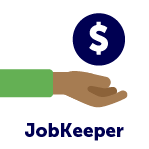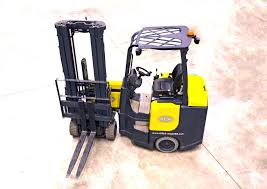Monthly Archives: October 2020
The new improved instant asset write-off – part 3

As I said in parts 1 & 2, in all my years as a business and tax advisor to small and medium businesses, there has never been a tax incentive that attracts as much interest as the instant asset write-off.
And now with no upper threshold, that interest may grow.
In this the third and final part, we set out our last set of 7 tips.
Before jumping in and buying an asset , please consider these additional considerations:-
15/. You can only claim the business portion on an asset that is used both for business and privately – such as a car or lap-top. That said, one can deduct the whole cost of cars provided the Fringe Benefit Statutory Formula method.
16/. If your business has current or carried forward losses in excess of your intended asset purchase(s), then your business will not gain any tax saving in this financial year.
17/. Please refer to our separate blog about using this concession to claim back company tax paid in respect of the 2019 and 2020 tax years. The results can be amazing!
18/. Small businesses can also use this concession to deduct written down value of the depreciable (general pool) assets. As it was, a small business could write-off the carried forward written down value of assets at 1st July 2020 when less than $30,000.
19/. As the write-offs can be large, we are now running two depreciation schedules for our business clients – one at normal rates and one with accelerated tax rates The reason for doing so is that the financial won’t show an artificially low profit which may deny a financial application or even review of existing arrangements.
20/. It applies to tangible assets – ones you can touch. This write-off threshold does not apply to intangible assets such as web pages.
21/. Beware of glitzy app based products as their rates tend to start above credit card rates. We can put you in contact with financiers who have access to the best deals.
With these 7 and the previous 14 common consideration, please don’t jump in and commit to an expensive asset without being absolutely assured of all of its consequences. We therefore welcome any question you have about the instant asset write-off.
Click here to read the first two sets of tips:-
Wages & JobKeeper trap

The cuts announced in the Federal Budget to personal income taxes were well covered in the press.
Not so well publicised was an inadvertent trap that many small businesses may fall into.
Those tax cuts are now law. Over recent days, cloud software providers have been migrating new tax scales into their cloud programs.
The trap is that employers who receive JobKeeper can’t continue to pay the same amount. Those employers paying tier 2 employees the minimum gross wage of $750 now have to pay $746 after tax and not $742 (as it was last fortnight). It doesn’t sound like much. But it means the world as an employer has to pay the base amount. If they do, they satisfy the wage condition and only then are entitled to receive JobKeeper.
So what if you have already paid employees for the fortnight ending Sunday 25th October?
Don’t panic.
Employers have until Friday 30th October to ensure they have met the minimum wage condition for these first two fortnights of JobKeeper Extension period 1.
What if I am on a desktop accounting program?
Then you are going to need to install an update. We can attend to this if you wish.
Want to know more about JobKeeper? Then check our other posts including:-
10 key actions to claim JobKeeper V2.
Missed out on JobKeeper – may be not
We also welcome any other other question you have.
21 tips about the new & improved instant asset write-off – part 2

As I said in part 1 last week, in all my years as a business and tax advisor to small and medium businesses, there has never been a tax incentive that attracts as much interest as the instant asset write-off.
And now the instant asset write-off has become even more attractive!
What was to be until December a $150,000 limit for small businesses has now become a complete write of all equipment purchases for any business with turnover under $5billion.
In such difficult times as this, it can deliver even greater outcomes when combined with the carry back of company losses.
But before doing so, please ensure you have factored in the following considerations (see part 1 last for the first 7 tips):-
8/. Your small business must own the asset. Your business either needs to pay for it or finance it by a loan, hire purchase or by way of a chattel mortgage contract.
9/. Assets that your business leases from others do not qualify for the write-off (as one does not own the asset until the final payment is made or the lease contract is paid out early).
10/. The incentive also doesn’t apply to assets that are leased by your business to others.
11/. It’s not about when you buy the asset. Your entitlement to claim is based on when you held the asset first ready for use. So for assets you need to have installed, it is not when you buy it; it is when you can first use it.
12/. Make sure you when buy an asset to have the installation date agreed upon.
13/. Installation and delivery costs comprise part of the cost of the asset.
14/. If you trade-in an asset, it is the cost of the new asset that qualifies. So if your business buys a car for $50,000 and trades in an old car for $8,000, then the deductible write-off is $50,000.
Please come back to this web page next week for a further 7 tips and traps.
You can read our first 7 tips here.
We welcome any question you may have in the meantime.
Super guarantee (SG) super deadline
Wednesday 28th October is the end date for satisfying Super Guarantee (SG) super obligations for the September 2020 quarter.
But beware as some of the clearing houses have a submission and payment deadline well before then. May be even today!
SG super is payable on all forms of remuneration including:-
-
Commissions.
-
Bonuses (but see below).
-
Directors’ fees and all other forms of remuneration to directors.
-
Allowances (except where fully expended).
-
Contractors paid mainly for their labour.
But excluding the following remuneration:-
-
Overtime.
-
Reimbursements.
-
Unused annual leave on termination.
-
Remuneration of less than $450 in a month.
-
Bonuses that are only in respect of overtime.
-
Bonuses that are ex-gratia but have nothing to do with hours worked (harder to satisfy than what you might think).
-
In respect of employees younger than 18.
-
Employees carrying our duties of a private or domestic nature for less than 30 hours in a week (such as nannies).
-
On quarterly remuneration greater than $57,090.
-
Non-residents performing work for an Australian business outside Australia.
SG super should never be paid late as late payments attract substantial interest and penalties. Furthermore, and SG (and BAS) liabilities that remain unreported and unpaid after 3 months automatically become personal debts of directors.
The SG rate remains at 9.50%.
So if you haven’t paid your employer super obligations already, we recommend doing so today.
Missed out on JobKeeper – may be not

To qualify for JobKeeper, you have to satisfy a decline in turnover. That can be either under the basic test or under one of the seven alternative tests.
The problem with both the basic and alternative tests as announced is that they don’t take into account extenuating circumstances in the comparative period.
We are therefore pleased to see the ATO today released a further alternative decline in turnover test.
This additional test applies where a business temporarily ceased trading in the comparative period and did so due to:-
-
an event or circumstance outside the ordinary course of the business and
-
trading temporary ceased for at least a week and
-
some or part of that closure period occurred during the comparative period and
-
the business resume trading before September 28, 2020.
If all of these four conditions are satisfied, then a business that qualified for JobKeeper V1 gets to test their decline in turnover against the September 2018 quarter. If a business did not qualify for JobKeeper version 1 then it can compare October 2020 to October 2018.
So what is an event or circumstance outside the ordinary course of the business?
The one event that comes to mind from the September 2019 quarter was the bushfires through New South Wales and Queensland.
Maybe your business suffered from an event that would allow you to qualify?
Qualifying for JobKeeper is not just about receiving JobKeeper. In Victoria, JobKeeper recipients can also apply for commercial rent relief and possibly the latest state business boost grant.
If you reckon you can qualify under this new test or have any other queries, we would be happy to assist.
21 tips about the new & improved instant asset write-off – part 1

In all my years as a business and tax advisor to small and medium businesses, there has never been a tax incentive that attracts as much interest as the instant asset write-off.
And now it has become even more attractive!
And what was to be until December a $150,000 limit for small businesses has now become a complete write of all equipment purchases for any business with turnover under $5 billion.
In such difficult times as this, it can deliver even greater outcomes when combined with the carry back of company losses.
But before doing so, please ensure you have factored in the following 20 key considerations:-
-
This concession originally only applied to the purchase of new assets. However businesses with group turnover under $50 million can now deduct the cost of second hand assets.
-
It does not apply to building or capital works nor software development pools or primary production assets.
-
If your business sells expensive assets, this expanded concession should prove to be a major buying incentive for your customers; even more so if you offer funding solutions. Ask us if you would like a worked example to use with your customers
-
Only buy an asset if you need it. So, if a company registered for GST buys and asset for $11,000, it will get back $1,000 of GST and will have a tax deduction of $10,000. It will pay $2,600 less company income tax. It will still be $7,400 out of pocket. As tempting as this limit is, don’t get too carried away and buy assets that your cash flow cannot support.
-
A tax deduction in the 2020/21 tax year will have a flow on effect as it will reduce the PAYG Instalments for 2021/22 and part way into 2022/23.
-
An asset purchased in 2020/21 will also have a flow on effect for those small businesses paying GST under the instalment method. It will reduce the GST Instalments for 2021/22 and part way into 2022/23.
-
Writing of large assets may be great for tax but can make your financials look ordinary, possibly disastrous to a current or future financier. For this reason, we now run two sets of depreciation schedules; one for tax and one for accounting / financial statements purposes. Effectively the tax rates are a nonsense and they should not make your financials misleading.
Please come back to this web page for a further 14 tips and traps.
We welcome any question you may have in the meantime.
Federal Budget – first impressions
Click here for our 2020 Federal Budget Guide.
The Federal Budget delivered last night was certainly unlike any other delivered in my lifetime.
There were range of significant announcements very much geared to get an economy up and running again.
Our briefing paper outlines the various announcements. And I do say announcements as that is all a budget is. The various announcements still have to be legislated; even those that are backdated to 1st July 2020.
So far today I have read through a number of briefing papers and have attended one research house webinar with another one this afternoon. And what is already proven to be the case yet again is that what has been discussed in the press after the budget is a rather narrow reflection of the changes and what they mean.
Over the coming days, we will learn more about these changes, we explore how you can benefit from them and will adapt our pre-year-end tax planning checklist. So keep an eye out for further examination of the ways you can benefit from this budget.
In the meantime though I would like to highlight what I believe to be the five biggest changes for most people with a bias towards business owners:-
-
Accelerated reduction to personal tax rates.
-
An uncapped limit on writing off the cost of a new business asset – for all but effectively the largest businesses.
-
Companies which made losses in the 2020 year or do so in 2021 and/or in 2022 can claim back tax paid in or after the 2019 tax year. You will hear a lot more about this particular in conjunction with the instant asset write-off.
-
A JobMaker hiring credit of up to $200 per new employee.
-
Fringe Benefits Tax announcements (which is the most misunderstood tax and an area in which the ATO is successful in 50% of their audits).
We look forward to exploring and systematically explaining to you how you will benefit from these announcements – so you will hear more from us. Please though don’t hesitate to contact us should you have any query.
Extension of commercial rent relief scheme

It is important to understand the background to the rent relief scheme. And as it is linked to JobKeeper, let us start there.
We have now entered what is best termed as JobKeeper Version 2.1. Those that qualify based off the September quarter will receive payments through the December quarter.
As of Monday, this means that we now have four types of employers:-
-
Those that qualified to continue to receive JobKeeper.
-
Those that have now qualified to receive for JobKeeper for the first time.
-
Those that have fallen out of the JobKeeper system and may not return for the March quarter.
-
Those that have fallen out of the JobKeeper system and but may return for the March quarter.
Receiving JobKeeper has been critical to enabling employers to keep their employees engaged, productive and not otherwise on social security.
Having qualified for JobKeeper has also been critical to business survival as with it comes the ability to claim some state grants and qualify for commercial tenancy relief.
In itself, the rent relief scheme has been the biggest saviour of small businesses. The scheme allows for rents to be reduced proportional to the fall in turnover. At least half of the rent reduction must be waived, the balance is payable either over the longer of the duration of the lease or 24 months.
This scheme was due to expire on 28th September when JobKeeper was supposed to end. However, legislation was finally passed this week by the state government which has extended this rent relief system to 31st December.
So businesses that qualify for JobKeeper through to the end of the December quarter can now re-apply for extended rent relief.
To do so, a business must provide to the landlord:-
-
A statement confirming turnover is under $50million.
-
A statement that the lease is eligible to be covered by the scheme.
-
JobKeeper registration number.
-
A statement stating decline in turnover support by one of:-
– accounting record extracts or
– BAS’s for the relevant periods (which means that those who lodge an Annual GST Return can’t use this method) or
– Bank statements or
– A letter from your accountant (for which we have supplied a number).
TIP Make your application as soon possible as the relief only applies from application date.
Practically speaking, an application can’t fail. It is true that a landlord can refuse an application. But should they refuse the matter can then be referred to mediation. And if they refuse to enter mediation, then the matter can be referred to VCAT. Either way the landlord is bound to lose as there will be a hearing and they are acting outside the mandatory code.
It is beyond the scope of this blog to explore every nuance and possible scenario. We do though welcome any query you may have.
Alternative ways to qualify for JobKeeper

Did you miss out on qualifying for JobKeeper?
Maybe you don’t.
The 30% fall in turnover test where a small business compares its turnover for July, August and the September last year to this year is not the only test. And yes, that test can yield some unexpected and unfair results as for most small businesses it measures what was banked during those two periods.
There are many circumstances where that test is an improper measure. In recognition of this, the ATO have released 7 alternative tests and include tests for:-
-
A businesses started in the last year.
-
Where there has been a substantial rise in turnover (which is often the case in a business progressing through its second or third year).
-
Businesses with irregular turnover.
-
Sole traders or small partnerships where there has been injury, illness or leave taken.
Maybe one of these four tests or the other three will see you qualify for another 7 fortnightly JobKeeper payments.
And if you do, you may then qualify for another $10,000 state grant.
And you will also qualify for extended commercial rent relief to the end of December.
Just as we achieved at the start of JobKeeper, working through these tests has resulted in clients qualifying for JobKeeper who failed the basic test.
So perhaps you do qualify for the extended JobKeeper period. As we are passionate about helping small businesses survive (and which are after all the engine room of the economy) we welcome the opportunity to explore your situation.
